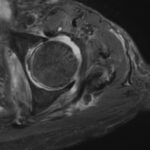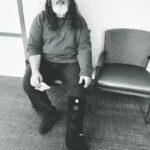(Reuters Health)—Women who maintain an overall healthy diet may benefit from a slightly reduced risk of hip fractures later in life, according to a new U.S. study. Women who followed a Mediterranean-style diet were about three tenths of a percent less likely to break a hip over about 16 years, compared to women who didn’t…
Search results for: hip fracture
Unexpected Benefits of Bisphosphonates after Hip Fracture
Recent trials show this bisphosphonates can reduce subsequent hip fractures and mortality, while remaining cost effective.

Fracture & an Aging World
Insights into osteoporosis treatments as societies around the world age.

Case Report: Hip Pain in End-Stage Renal Disease
Renal osteodystrophy is associated with chronic kidney disease (CKD) and its associated metabolic derangements, most commonly CKD stages 3–5. It is often subclassified into four histological subtypes, with definite distinctions unable to be made clinically. These four subtypes, which may only be differentiated by bone biopsy, include: osteitis fibrosa cystica, mixed uremic osteodystrophy, osteomalacia and…

Treat to Target Lowers the Risk of Fracture in Patients with Gout
Using data from the U.K.’s Health Improvement Network, a primary care database, Wei et al. examined whether urate-lowering therapy (ULT) in a treat-to-target approach for patients with gout reduces the risk of fracture.

Supplemental Vitamin D May Not Protect Against Fractures in Healthy Adults
Supplemental vitamin D may not significantly lower the risk of fractures in generally healthy adults compared with placebo, according to a large study by LeBoff et al.

FDA Approves Abaloparatide to Treat Men with Osteoporosis & a High Risk of Fracture
In late December, the FDA approved subcutaneous abaloparatide for the treatment of men with osteoporosis at a high risk of fracture. This approval is based on a placebo-controlled study that showed abaloparatide led to significant increases in bone mineral density of the lumbar spine, total hip and femoral neck. Abaloparatide was approved in April 2017 for the treatment of postmenopausal women with osteoporosis at high risk for fracture.
At Least 1 Year on Bisphosphonates Needed for Fracture Prevention
(Reuters Health)—It takes 12.4 months of bisphosphonate therapy to prevent one nonvertebral fracture per 100 postmenopausal women with osteoporosis, a meta-analysis of randomized clinical trials suggests.1 Researchers examined data on 10 randomized clinical trials with a total of 23,384 women who had an osteoporosis diagnosis based on either existing vertebral fractures or a bone mineral…
Denosumab Promising for Osteolysis after Total Hip Replacement
NEW YORK (Reuters Health)—Denosumab showed biological efficacy against osteolysis after total hip replacement in a proof-of-concept trial. “Denosumab is already a well-established licensed drug for the indications of osteoporosis and metastatic bone lesions in cancer, and has been shown to be effective in reducing erosions in inflammatory arthritis,” Dr. Mark J.M. Wilkinson of the University…

Targeted Vertebral Fracture Assessment
A Canadian study sought to identify individuals at high fracture risk and provide them with pharmacotherapy to prevent fractures. They found the assessment of hip and lumbar dual-energy X-ray absorptiometry scans for vertebral fracture can be useful in the identification of women and men aged 70 years and older who should qualify for anti-osteoporosis treatment…
- « Previous Page
- 1
- 2
- 3
- 4
- …
- 27
- Next Page »